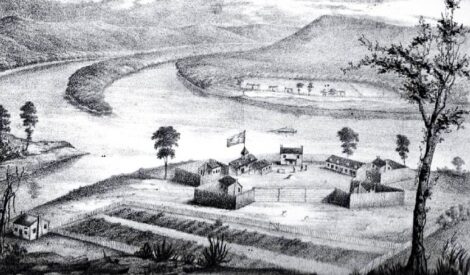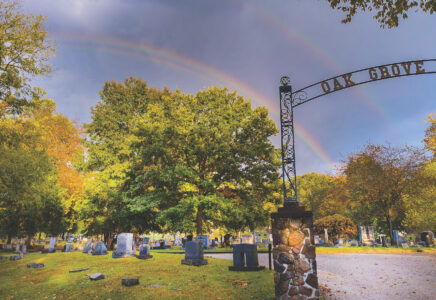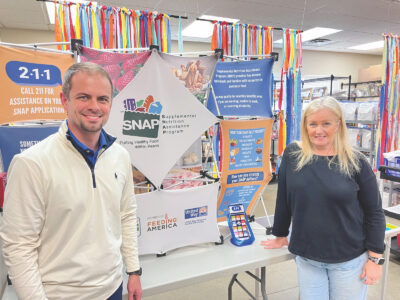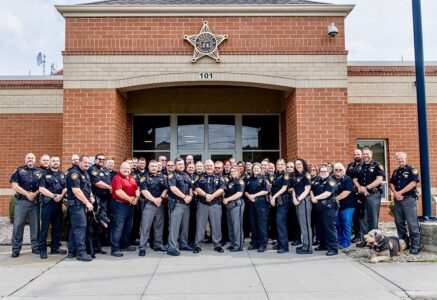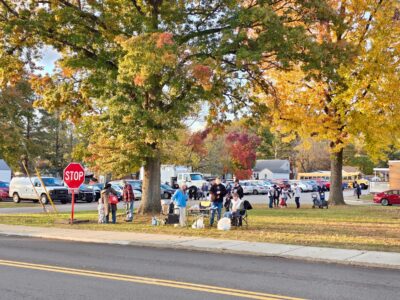Cooperative model of broadband working in local rural areas
The cooperative model of broadband operation is working in Southeast Ohio, Washington County Commissioners were told in a recent update from the volunteer who has been directing the slow but steady spread of wireless service in local rural areas.
David Brown, a founding member and manager of the Southeast Ohio Broadband Cooperative for the past three years, said in a meeting Thursday the co-op now has 400 subscribers, up from 300 in March 2022.
The waiting list is at about 1,100 subscribers. The cooperative has four full-time volunteers, counting Brown, some part-time volunteers and two paid employees who are installers. When finances will allow, they will hire a third installer.
They now have nine active Multi-Agency Radio Communications System towers and three non-MARCS towers. MARCS sets aside frequencies for first responders such as fire departments and EMS squads. It allows them to communicate easily with each other, as well as with other agencies. There are more than 300 MARCS towers in Ohio and the state allows the cooperative to have space on the towers Brown mentioned in order for the co-op to run its own radio system. The three non-MARCS towers are from I Heart Radio, American Tower and the broadband cooperative.
The cooperative also has four more repeater towers, a total of seven, including one at the Washington County Home. It also has repeaters on sites people have volunteered, such as silos and rooftops. A repeater is an antenna that amplifies a radio signal.
Three schools, Cutler, Lawrence and Newport, now have free wireless access in parking lots, funded by the co-op. Individual private contributions also have provided the equipment for volunteer fire departments to hook up to the wireless system with no charge from the co-op.
But the most important message Brown had for the county commissioners last week was, “we are up and operating.” It may seem like an obvious statement, but it actually refers to the fact that it has been a painstaking 18 months to fully restore and update wireless equipment the co-op inherited from previous entities who tried broadband in the area.
“First, there was Towerlink. It folded. Then, one of those employees started Smart Networks. That eventually folded. Then came Serenity Wireless, which was really only one guy trying to do everything, and the equipment really fell into disrepair,” Brown said.
That situation is now resolved. Broadband cooperative equipment is ready to go, he said.
Some of the large broadband companies, such as Charter, have gotten money to help bring broadband into underserved areas. But Brown says “it’s going to be another five years before you see the first fiber connection.” It’s a lot harder than it looks. First, fiber is very expensive. Second, there are supply chain issues. “We’ve had orders in since August of last year.” Third, the poles holding the lines can present a lot of challenges.
If AEP or a similar company owns the poles in the area, the company wanting to add fiber lines has to pay them a “make ready” cost, Brown said. If any poles need replaced in order to carry the extra weight, that’s part of the the “make ready” cost. On some poles, coax cable, phone and power are all they can hold. They can’t hold more. Before any work can begin, a study has to be conducted on the suitability of all the poles. Once fiber is strung, the fiber “drop down” connections only can be made about every thousand feet along the poles. Then there’s the considerable cost of actually getting to the houses. Some houses may not be able to be reached.
There are people in the area who may look up and see fiber strung along area poles where they live. But the companies who did that are authorized as suppliers, not vendors. They can’t run service to peoples’ houses. They can sell service to the co-op, though, because it’s a nonprofit. Then the co-op can resell the service to consumers. At the moment, Brown says, the co-op is desperately trying to get service to people on Ohio 26 through this method. Again, though, the effort and costs are considerable.
For various reasons, Brown said, there are not many places to turn for additional funding.
“The only funds we’ve ever gotten are initial start-up costs from the Washington County Commissioners, and some from Frontier Schools,” he said. “Whatever money we do get goes back into the cooperative. There aren’t any administrative costs or anything like that.”
In fact. he said, the cooperative doesn’t even have an “official” office. They operate out of a storage building and a couple of vehicles.
“If we were ever going to get new carpeting for our office,” he mused, “it would be new floor mats for the truck.”
The Southeastern Ohio Broadband Cooperative “office” can be reached at 740-538-0084.

